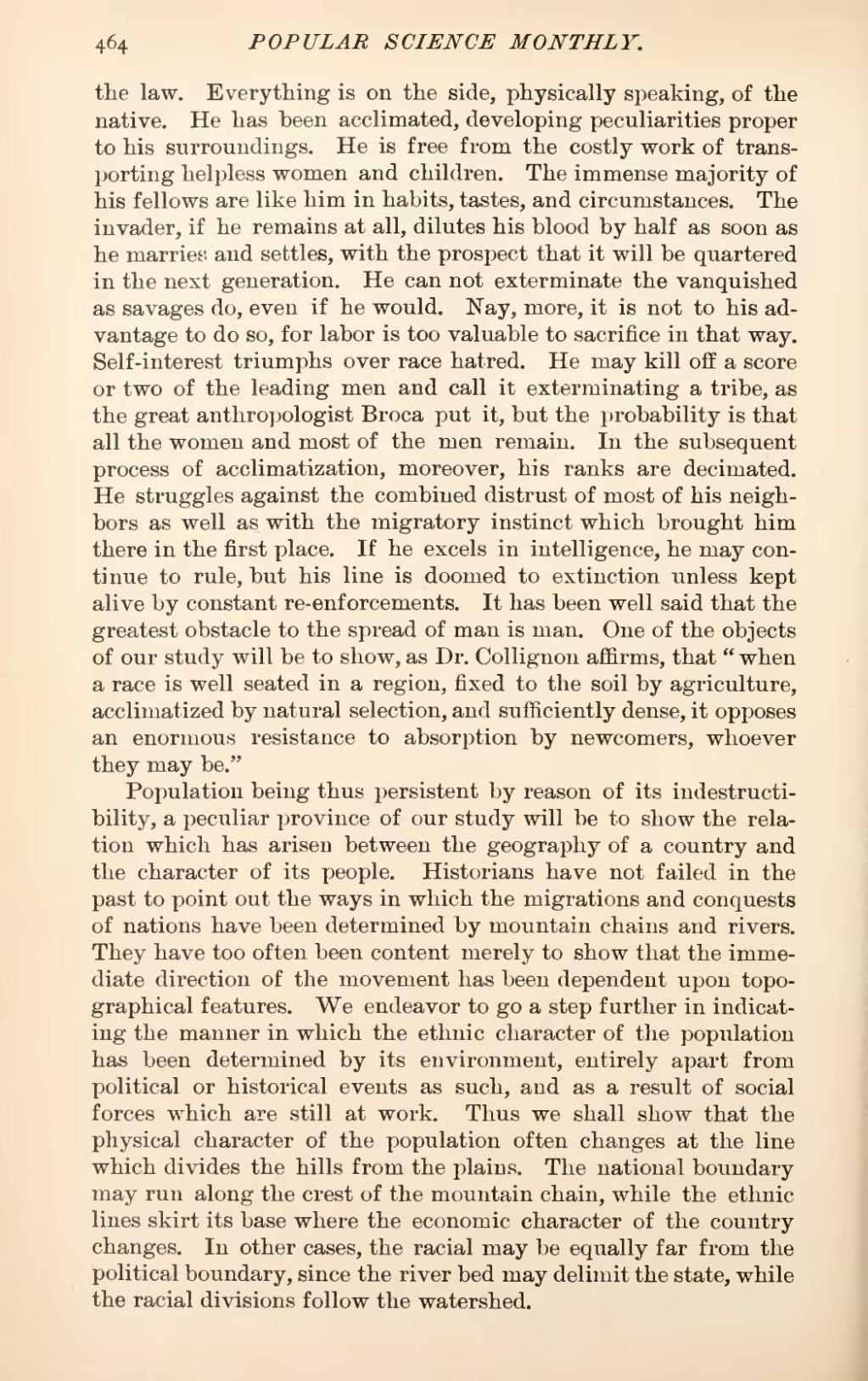the law. Everything is on the side, physically speaking, of the native. He has been acclimated, developing peculiarities proper to his surroundings. He is free from the costly work of transporting helpless women and children. The immense majority of his fellows are like him in habits, tastes, and circumstances. The invader, if he remains at all, dilutes his blood by half as soon as he marries, and settles, with the prospect that it will be quartered in the next generation. He can not exterminate the vanquished as savages do, even if he would. Nay, more, it is not to his advantage to do so, for labor is too valuable to sacrifice in that way. Self-interest triumphs over race hatred. He may kill off a score or two of the leading men and call it exterminating a tribe, as the great anthropologist Broca put it, but the probability is that all the women and most of the men remain. In the subsequent process of acclimatization, moreover, his ranks are decimated. He struggles against the combined distrust of most of his neighbors as well as with the migratory instinct which brought him there in the first place. If he excels in intelligence, he may continue to rule, but his line is doomed to extinction unless kept alive by constant re-enforcements. It has been well said that the greatest obstacle to the spread of man is man. One of the objects of our study will be to show, as Dr. Collignon aflirms, that "when a race is well seated in a region, fixed to the soil by agriculture, acclimatized by natural selection, and sufficiently dense, it opposes an enormous resistance to absorption by newcomers, whoever they may be."
Population being thus persistent by reason of its indestructibility, a peculiar province of our study will be to show the relation which has arisen between the geography of a country and the character of its people. Historians have not failed in the past to point out the ways in which the migrations and conquests of nations have been determined by mountain chains and rivers. They have too often been content merely to show that the immediate direction of the movement has been dependent upon topographical features. We endeavor to go a step further in indicating the manner in which the ethnic character of the population has been determined by its environment, entirely apart from political or historical events as such, and as a result of social forces which are still at work. Thus we shall show that the physical character of the population often changes at the line which divides the hills from the plains. The national boundary may run along the crest of the mountain chain, while the ethnic lines skirt its base where the economic character of the country changes. In other cases, the racial may be equally far from the political boundary, since the river bed may delimit the state, while the racial divisions follow the watershed.
